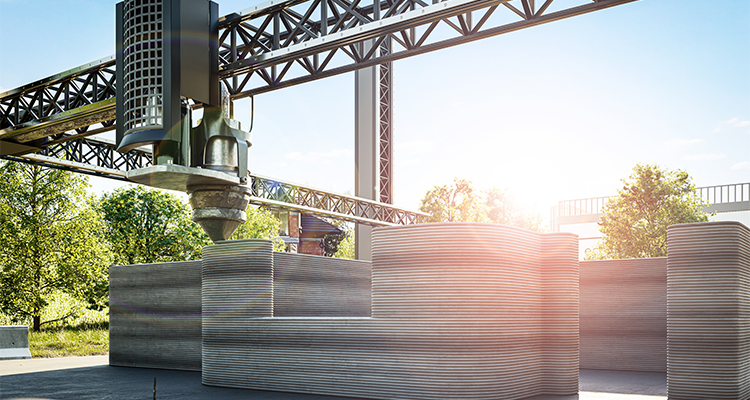Europe’s first 3D printed football facility to break ground
Located in Germany, this initiative highlights the shift towards 3D construction printing beyond the residential sector
Leading the charge for innovative building technology, PERI 3D Construction is set to create Europe’s first-ever 3D printed football club facility and public building. The project showcases 3D printing’s potential beyond low-rise residential housing with COBOD’s BOD2 printer.
Utilising the largest printer configuration to date by PERI 3D Construction, a COBOD BOD2 model measures 25 meters long, 15 meters wide, and 10 meters high. The future SC Capelle football clubhouse will boast a usable floor space of approximately 330 square meters.
Its estimated completion time is predicated to take approximately 140 hours, highlighting the technology’s potential for rapid, efficient, and sustainable construction.
Dr. Fabian Meyer-Brötz, Managing Director of PERI 3D Construction, stated the work overcomes pressing industry issues. “In the face of significant challenges, such as a skilled worker shortage and stagnating productivity in construction, innovative printing offers an urgently needed solution to build faster, cheaper projects, and with less materials.”
The unique design for the building is the creative work of Steinhoff Architekten, an architectural firm known for embracing forward-thinking construction methods.
The clubhouse will be used by SC Capelle, playing in the third division in Germany.
Mayor of Nordkirchen, Dietmar Bergmann commented on the project’s significance. He said: “This initiative is a clear signal that small towns in rural regions can also drive innovations and future technologies.
“With the substantial financial support from the Ministry of Home Affairs of the State of North Rhine-Westphalia, and the expertise of our project partners, we are realising a construction project in Nordkirchen that is attracting attention, not only locally but also on a broader scale.”
The project sets the stage for the continued evolution of construction methodologies. It proves that 3D construction printing is a viable option not just for low-rise housing, but for larger, more complex structures across various building sectors.
